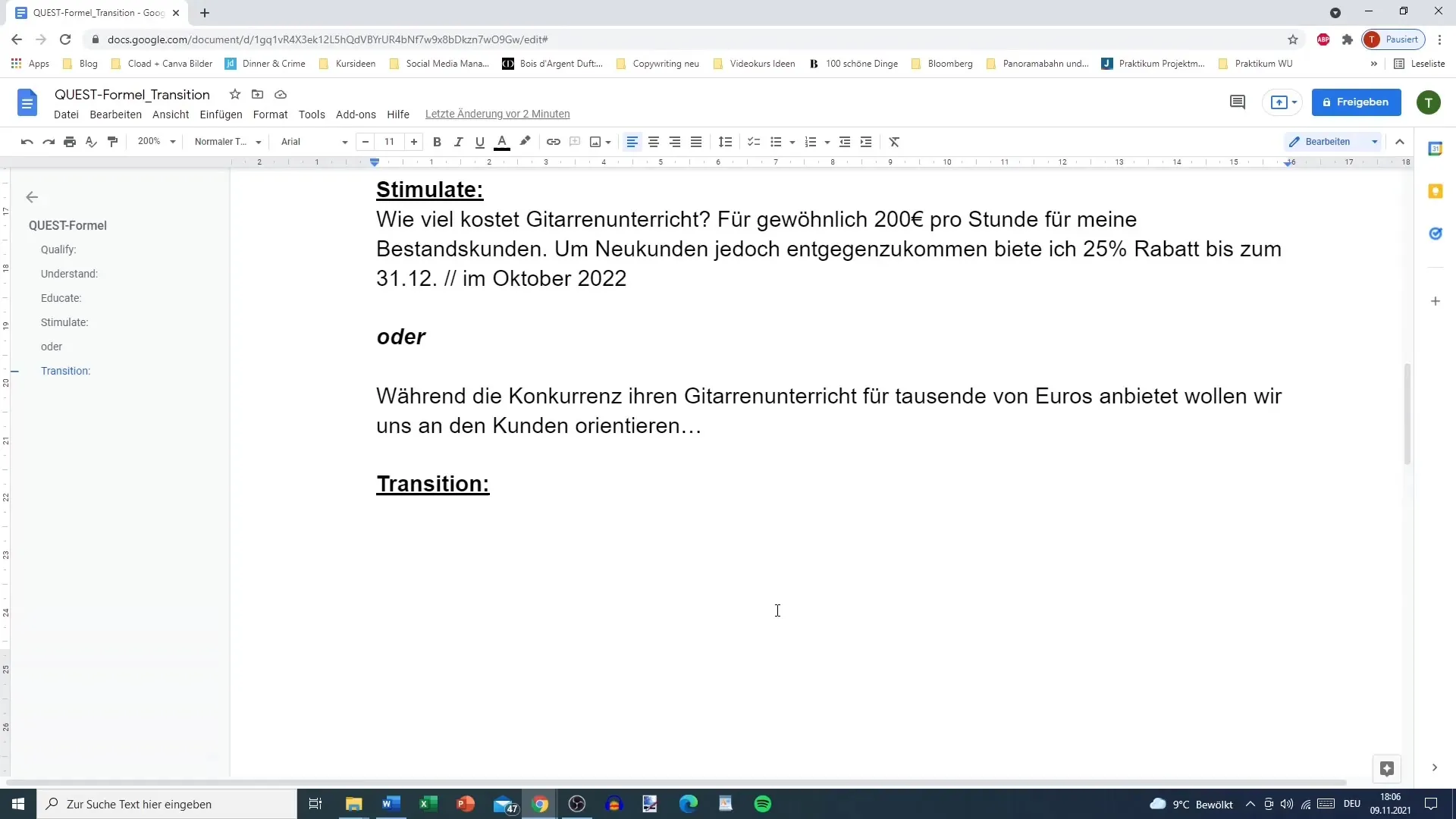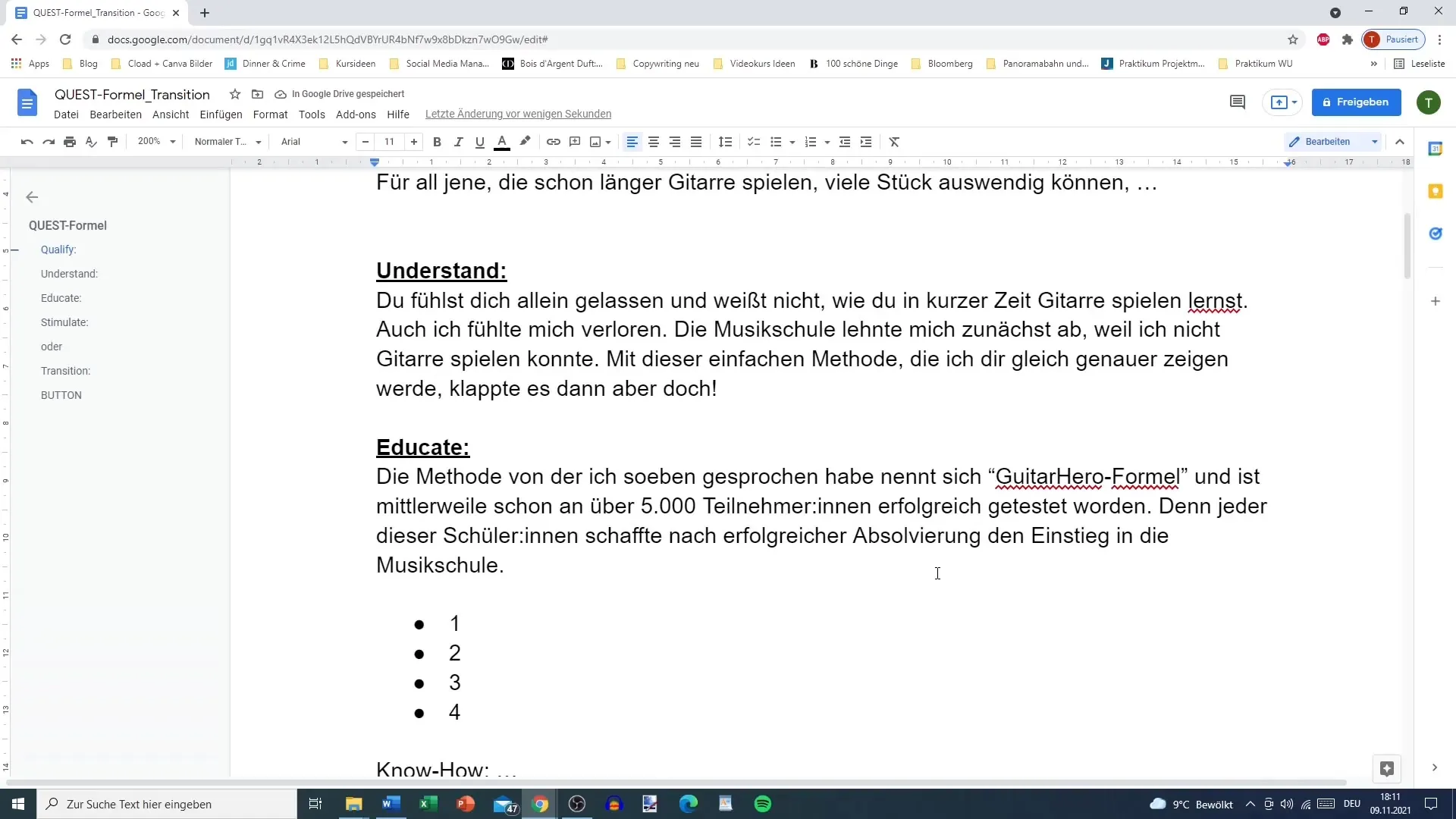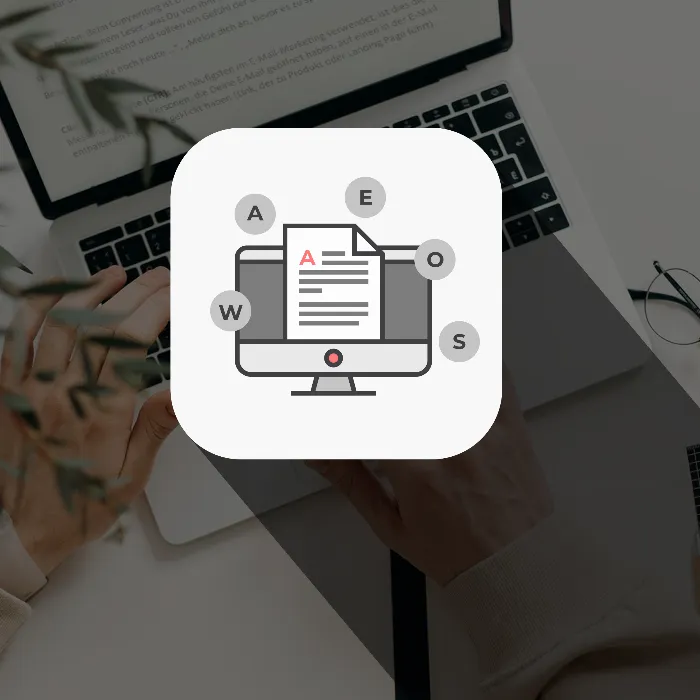The transition between the main content of your texts and the concluding Call-to-Action (CTA) plays a crucial role in Copywriting. This is where the decisive moment is created, in which readers or potential customers should be prompted to take action. In this tutorial, we focus on the final step of the QUEST method - the Transition. You will learn how to effectively design your Call-to-Action to encourage action from your target audience.
Key Insights
- The Call-to-Action is the decisive moment when readers are prompted to take action.
- A clear connection between CTA and what the reader receives is crucial.
- The CTA should be specific, time-bound, and understandable to achieve the best impact.
Step-by-Step Guide
To optimize your transition and the Call-to-Action, follow these steps:
Formulate the Call to Action
Start by clearly and unequivocally formulating your Call-to-Action. It's about telling the reader exactly what to do. For example: "Click now on the link!" This should be done in direct address to establish a personal connection.

Summarize the Product Offering
In the next step, summarize your product offering. Ensure that it is clear what the reader will receive when following the Call-to-Action. For example: "Would you like to secure the Guitar Hero Formula?" By summarizing the offer, you increase interest and willingness to act.
Emphasize the Added Value
Furthermore, it is important to clearly communicate the added value. For example, if you are offering a discount, mention it directly: "Get 25% discount now!" Readers are more likely to click if they see a clear benefit.
Set the Timing for the Action
Set clear time limits: "Now is your chance!" Readers need to know that there is a certain time frame for the action. By adding a sense of urgency, you increase the likelihood that they will take action.
Execute the Action and Explain the Consequences
Explain to the reader what happens after clicking: "Click now on the link and secure the Guitar Hero Formula for only €150!" This creates clarity and sets expectations for what they can expect.
Strengthen the Connection with the CTA
Make sure to establish a clear connection between the Call-to-Action and what the reader receives. Clearly state: "By clicking, you secure the formula." This makes it easier for the reader to understand why they should click.
Provide Additional Information
If necessary, you could also provide additional information on delivery or access. For example: "I will send this to you via email." This gives the reader confidence that they will receive what they expect after taking action.
Check Spelling and Presentation
Finally, make sure to check your text for spelling errors. Error-free content makes a professional impression and can help gain the trust of readers.

Summary
In summary, an effective transition and a clearly formulated Call-to-Action are crucial to move readers to take action. Simply placing a link is not enough; you must clearly communicate what they can expect and why they should act.
Frequently Asked Questions
What is the Call-to-Action?The Call-to-Action is a clear directive to the reader to prompt them to take a specific action.
How do I formulate an effective transition?An effective transition combines clear instruction, the value of the offer, and a timely incentive.
Why is it important to emphasize the added value?The added value convinces the reader by showing what concrete benefits they gain from the action.
What should I consider regarding spelling?Spelling errors decrease the professionalism of the text and can affect the readers' trust.
How can I increase urgency?By using time-limited offers or phrases like "Now is your chance!"


